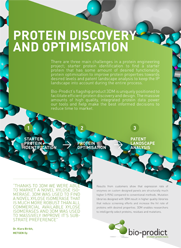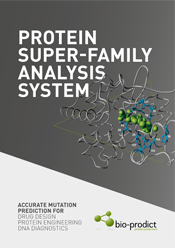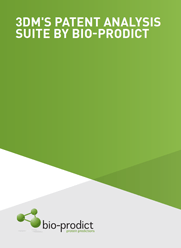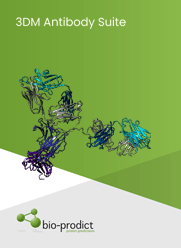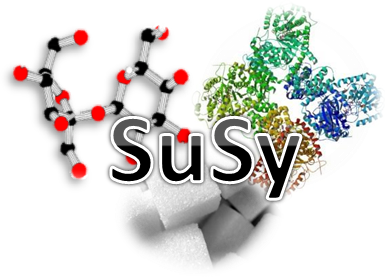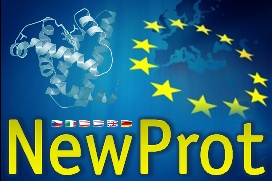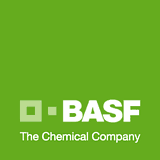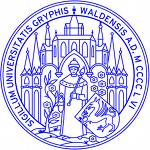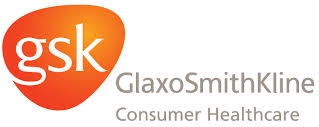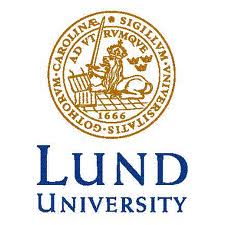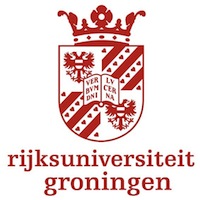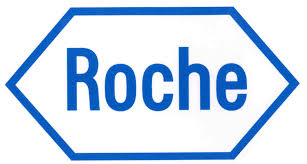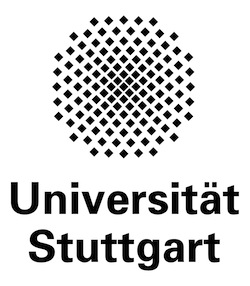Bio-Prodict
Bio-Prodict is focused on delivering solutions for guiding scientific research in the field of protein engineering, molecular design and DNA diagnostics. We apply novel approaches to data mining, storage and analysis of protein data and combine these with state-of-the art analysis methods and visualization tools to create custom-built information systems for protein superfamilies.
Over the years, these systems have proved to be powerful instruments for understanding many of the complex aspects involved in protein function and mutation effect prediction. Years of experience in software design, structural biology and the analysis of protein super-family data make Bio-Prodict your choice for protein-related data analysis and software design.
News
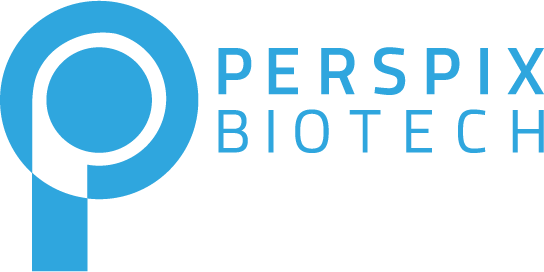
Bio-Prodict and Perspix will join the best of both worlds setting up a new joint venture in which we will build a completely automated and AI driven antibody design laboratory. Read more - July 2023

We will be attending the PEGS Europe summit at 14-16 November in Lissabon

Best mutation prediction company in Western Europe - 2023
Products
How 3DM works
This 3DM video highlights some of the key concepts and functions of our protein superfamily data integration platform, 3DM. If you would like to try 3DM you can register for a 3DM demo account.
Product links
3DM 3DM Antibodies Helix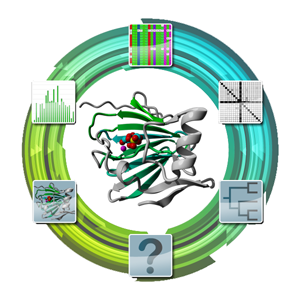
Technology
The main products of Bio-Prodict are 3DM information systems. 3DM information systems are protein super-family platforms that collect, combine and integrate many different types of protein-related data. 3DM systems are designed to facilitate the exploration of sequence-structure-function relations, and have successfully been used many times to elucidate the function of individual amino acids, predict the effects of mutations, among others. We have a number of publicly available information systems that you can try out.
Data management
For any one protein family there is already an overwhelming amount of data available. Managing and integrating all this
data can be a daunting task; studies that involve carrying over information from one protein to the other seem simple
at a first glance, however, the amount of data that needs to be collected from heterogeneous sources, converted to
syntactic and semantic homogeneity, validated, curated, stored and indexed, is enormous.  To
manage the increasing amounts of protein-related data Bio-Prodict has developed 3DM: systems that can automatically
collect, store and connect many different super-family data types from various sources. Examples of data types that are
used by 3DM are sequences, structural information, protein-ligand and protein-protein contact information, mutational
data (which is automatically retrieved from literature), and information extracted from multiple sequence alignments
(correlated mutations, amino acid conservation patterns, subfamily specific residues, etc). All these different data
types are stored in specialized protein super-family system that are centered around a structure based multiple
sequence alignment.
To
manage the increasing amounts of protein-related data Bio-Prodict has developed 3DM: systems that can automatically
collect, store and connect many different super-family data types from various sources. Examples of data types that are
used by 3DM are sequences, structural information, protein-ligand and protein-protein contact information, mutational
data (which is automatically retrieved from literature), and information extracted from multiple sequence alignments
(correlated mutations, amino acid conservation patterns, subfamily specific residues, etc). All these different data
types are stored in specialized protein super-family system that are centered around a structure based multiple
sequence alignment.
Data integration
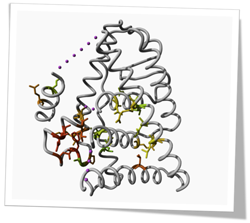
3DM applies a unified numbering scheme to the alignment, the sequences, and the structures. This numbering scheme makes it easy to visualize and integrate all different data types in the alignment, in the structures and in relation to each other, enabling easy detection of correlations between the different data types. Using a common numbering scheme for all proteins in the system allows for the easy transfer of information between proteins. 3DM super-family systems have a highly flexible setup making it easy to implement in-house data (such as mutational information).
3DM is tightly integrated with the state of the art molecular graphics and modeling software YASARA , which makes it easy to project the different data types on a protein structures and visualize trends extracted from the 3DM systems in a structural context. The use of YASARA, winner of the CASP8 refinement section, to build 3DM-based homology models ensures that you get the highest quality models possible.

3DM course
Although 3DM is highly user friendly we advice all new users to do the 3DM course to maximize the output you get from your database. The course can also be used to help decide if you need a 3DM license. Participants will get an overview of the different tools available in a 3DM information systems Participants will learn how to use 3DM by solving themselves real live protein Engineering, homology modeling and drug design problems. Participants will explore different kinds of protein super-family data and will learn how to use and extract relations from the data. The structure visualization tools YASARA and PyMOL will be used to deal with the data from a structural perspective.
-
There are two options for following the course:
- Online 3DM course: Two day training consisting of webinars and online practicals (Academic: €600; Commercial: €1000, per participant)
- Two days in-house training (€3.000 + traveling expenses, per group)
Contact
Address
Bio-Prodict BV Nieuwe Marktstraat 54E6511 AA, Nijmegen
The Netherlands
P: +31 (0)24 845 7988
E:

KvK: 09182358
BTW: NL819377089B01
Demo account
To register for a demo account, click on the large green button.
After registration take a look at the installation instructions
Publications
2023:1. AmiP from hyperthermophilic Thermus parvatiensis prophage is a thermoactive and ultrathermostable peptidoglycan lytic amidase. (Protein science: a publication of the Protein Society)
Helix Pathogenicity was used in multiple studies as a source of truth for pathogenic missense variants:
2. Pathogenic Variant Spectrum in Breast Cancer Risk Genes in Finnish Patients. (MDPI)
3. Exome sequencing identifies breast cancer susceptibility genes and defines the contribution of coding variants to breast cancer risk. (Nature Genetics)
4. Genome-wide Association Study of Postpartum Depression Identifies a Novel Susceptibility Locus at 18q12.1. (medRxiv)
2022:1. Functional Analysis Identifies Damaging CHEK2 Missense Variants Associated with Increased Cancer Risk. (Cancer Research)
2. Breast cancer risks associated with missense variants in breast cancer susceptibility genes. (Genome Medicine)
2021:1. Going to extremes - a metagenomic journey into the dark matter of life. (FEMS Microbiology Letters)
2. White paper: The Helix Pathogenicity Prediction Platform. (aRxiv)
3. Structure-function relationships in NDP-sugar active SDR enzymes: Fingerprints for functional annotation and enzyme engineering. (Biotechnology Advances)
2020:1. Mind the gap: preventing circularity in missense variant prediction. (bioRxiv)
2019:1. Distant Non-Obvious Mutations Influence the Activity of a Hyperthermophilic Pyrococcus furiosus Phosphoglucose Isomerase. (MDPI)
2. Functional analysis of genetic variants in the high-risk breast cancer susceptibility gene PALB2. (Nature Communications)
2018:1. Complete switch of reaction specificity of an aldolase by directed evolution in vitro: Synthesis of generic aliphatic aldol products. (Wiley)
2. Recessive variants of MuSK are associated with late onset CMS and predominant limb girdle weakness. (Am J Med Genet)
2017:1. CorNet: Assigning function to networks of co-evolving residues by automated literature mining. (PLOS ONE)
2. Complex phenotypes associated with STIM1 mutations in both coiled coil and EF-hand domains. (Neuromuscular Disorders)
3. Two-enzyme hydrogen-borrowing amination of alcohols enabled by a cofactor switched alcohol dehydrogenase. (ChemCatChem)
4. Enzyme discovery beyond homology: a unique hydroxynitrile lyase in the Bet v1 superfamily. (nature.com)
5. Switch in Cofactor Specificity of a Baeyer–Villiger Monooxygenase. (Wiley)
6. A structural classification of carbohydrate epimerases: From mechanistic insights to practical applications. (ScienceDirect)
7. A quantitative indicator diagram for lytic polysaccharide monooxygenases reveals the role of aromatic surface residues in HjLPMO9A regioselectivity. (PLOS ONE)
2016:1. Common Pitfalls and Novel Opportunities for Predicting Variant Pathogenicity. (Biochemistry & Physiology: Open Access)
2. In-silico smart library design to engineer a xylose-tolerant hexokinase variant. (African Journal of Biotechnology)
3. Fully automatized high-throughput enzyme library screening using a robotic platform. (Biotechnology and Bioengineering)
4. Engineering the Amine Transaminase from Vibrio fluvialis towards Branched-Chain Substrates. (ChemCatChem)
5. Bioinformatic analysis of fold-type III PLP-dependent enzymes discovers multimeric racemases. (Applied Microbiology and Biotechnology)
6. Synthesis of (1R,3R)-1-amino-3-methylcyclohexane by an enzyme cascade reaction. (Tetrahedron)
2015:1. Simultaneous use of in silico design and a correlated mutation network as a tool to efficiently guide enzyme engineering. (ChemBioChem)
2. Bioinformatic analysis of a PLP-dependent enzyme superfamily suitable for biocatalytic applications. (Biotechnology Advances)
3. A structural classification of carbohydrate epimerases: From mechanistic insights to practical applications. (Biotechnology Advances)
4. Alteration of the Donor/Acceptor Spectrum of the (S)-Amine Transaminase from Vibrio fluvialis. (International Journal of Molecular Sciences)
5. Two Subtle Amino Acid Changes in a Transaminase Substantially Enhance or Invert Enantiopreference in Cascade Syntheses. (ChemBioChem)
6. Synthesis of (1R,3R)-1-amino-3-methylcyclohexane by an enzyme cascade reaction. (Tetrahedron)
7. FireProt: Energy- and Evolution-Based Computational Design of Thermostable Multiple-Point Mutants. (PLOS Computational Biology)
2014:1. GPCRDB: an information system for G protein-coupled receptors. (NAR)
2. The NewProt Self-Service Portal for Protein Engineering (SWAT4LS)
2013:3DM was used in a series of protein engineering experiments:
1. Use of 'small but smart' libraries to enhance the enantioselectivity of an esterase from Bacillus stearothermophilus towards tetrahydrofuran-3-yl acetate. (FEBS J)
2. Mapping the acceptor site of sucrose phosphorylase from Bifidobacterium adolescentis by alanine scanning. (Elsevier)
3. Consensus engineering of sucrose phosphorylase: the outcome reflects the sequence input. (Elsevier)
Protein engineering books and reviews refering to 3DM:
4. Site-Directed Mutagenesis as Applied to Biocatalysts. (springer)
5. Protein Engineering as a Tool for the Development of Novel Bioproduction Systems. (CDN)
6. Engineering proteins for thermostability through rigidifying flexible sites (RFS). (Biotechnol Adv)
2012:Drug design is becoming more and more difficult and 3DM has been described as an essential tool for drug design in the future.
1. Drug design for ever, from hype to hope (J Comput Aided Mol Des)
2. Recent advances in rational approaches for enzyme engineering (CSBJ)
Protein engineering books and reviews refering to 3DM:
3. Strategies for discovery and improvement of enzyme function: state of the art and opportunities. (Microb Biotechnol)
4. Hydrolases as Catalysts for Green Chemistry and Industrial Applications-Esterase, Lipase and Phytase. (PhD thesis)
2011:3DM was used to increase the thermostability by rational design of a sucrose phosphorylase.
1. Increasing the thermostability of sucrose phosphorylase by a combination of sequence- and structure-based mutagenesis (PEDS)
Utopia (a pdf reader that can analyse the content of publications) is coupled to GPCR and Nuclear Receptor MCSIS systems enabling visualisation of data in articles and to provide links to relevant literature.
2. Integrating GPCR-specific information with full text articles. (BMC bioinformatics)
3. NucleaRDB:information system for nuclear receptors. (NAR)
A 3DM system was generated for the P450 protein super-family and it's applicability for P450 related research is extensively described.
4. 3DM Protein Engineering Super-Family systems applied to the P450 family. (Proceedings of the 17th International Conference on Cytochrome P450)
3DM was used to guide the discovery of a compensating mutation in C-methyltransferase NovO.
5. Molecular characterization of the C-methyltransferase NovO of Streptomyces spheroides, a valuable enzyme for performing Friedel-Crafts alkylation. (J. Mol. Catal. B: Enzym)
2010:3DM was used to investigate the alpha-beta-hydrolase protein super-family, which revealed specific motifs that divides the different functional members. Furthermore, this 3DM was used to design specific libraries that have a high content of mutants with increased activity (250x), enantioselectivity (E3 -> E80), and thermostability. The results have been published in four articles:
1. The a-b-hydrolase fold 3DM database (ABHDB) as a tool for protein engineering (Chembiochem)
2. Thermostabilization of an esterase by alignment-guided focussed directed evolution ( PEDS)
3. Natural Diversity to Guide Focused Directed Evolution (Chembiochem)
4. Simulation on the structure of pig liver esterase. (J Mol Model)
A review of the 3DM methodology has been published in Proteins. This review shows how 3DM can guide experimental design, demonstrated with results obtained from different 3DM systems.
5. 3DM: systematic analysis of heterogeneous super-family data to discover protein functionalities. (Proteins)
To predict pathogenicity of mutations in disease-related proteins, two new 3DM tools have been developed: Validator (a graphical user interface for DNA diagnostics) and Mutator (a tool for automatic collection of mutational data from literature). These have been used to generate the FMDB (Fabry Mutation Database)
6. Novel tools for extraction and validation of disease related mutations applied to Fabry disease. (Human Mutation) (1 editorial note)
A novel DNA diagnostics mutation prediction tool was developed (HOPE) and tested on 16 human disease-related proteins.
7. Protein structure analysis of mutations causing inheritable diseases. An e-Science approach with life scientist friendly interfaces. (BMC Bioinformatics)
In 2010 three reviews were published describing current protein engineering strategies, describing 3DM as a powerful tool.
8. Beyond directed evolution--semi-rational protein engineering and design. (Curr Opin Biotechnol)
9. Status of protein engineering for biocatalysts: how to design an industrially useful biocatalyst. (Curr Opin Chem Biol)
10. Protein design in metabolic engineering and synthetic biology. (Curr Opin Biotechnol)
2009:3DM contains multiple novel super-family analysis tools, such as a correlated mutation analysis tool (Comulator) specifically designed for the analysis of large super-family alignments. Comulator was used to increase enzyme activity and change enzyme specificity, and proved a powerful tool in enzyme design:
1. Correlated mutation analysis on super-family alignments reveal functionally important residues. (Proteins)
2. Identification of a gatekeeper residue that prevents dehydrogenases to act as oxidases. (JBC)
2008:The first automatically generated 3DM system was created for the isocitrate lyase superfamily. Oxaloacetate hydrolase (OAH) is a member of this enzyme super-family. This 3DM was used to investigate OAH-like proteins and to design mutagenesis experiments. This work revealed the unknown reaction mechanism of OAH, which enabled the design of a strong inhibitor. Furthermore, it was shown that 3DM could be used to find hotspots for enzyme specificity. This in turn predicted a new function for 2,3-Dimethylmalate Lyase, a protein highly similar to OAH. The results are published in three peer-reviewed articles:
1. Oxaloacetate Hydrolase, the C-C Bond Lyase of Oxalate Secreting Fungi. (JBC)
2. Identification of fungal oxaloacetate hydrolyase within the isocitrate lyase/PEP mutase enzyme superfamily using a sequence marker-based method. (Proteins)
3. Structure and Function of 2,3-Dimethylmalate Lyase, a PEP Mutase/Isocitrate Lyase Superfamily Member. (JMB)
2007:3DM was developed because the generation and updating of super-family systems is very time consuming. The 3DM method is patented in 2007 and fully described in the PhD thesis of Henk-Jan Joosten:
1. Method of generating a protein database. (patent WO/2008/035970)
2. 3DM: From Data to Medicine. (PhD thesis)
2004-2005:Superfamily information systems have been guiding the understanding of different aspects of protein function. Folketsma et al. showed how to use such systems to understand the function of specific amino acids:
1. A family-based approach reveals the function of residues in the nuclear receptor ligand-binding domain (JMB)
2. The Nuclear Receptor Ligand-Binding Domain: A Family-Based Structure Analyses. (Current Med. Chem.)
About us
Bio-Prodict is a private Dutch computational biotechnology company founded 5th of May 2008.
The core business of Bio-Prodict is development of protein superfamily systems aimed at speeding up research time in the area of drug design, protein engineering, and DNA diagnostics.
These general terms and conditions and the ICT office terms and conditions apply to all Bio-Prodict services.
Team
Positions & Internships
Bio-Prodict is a great place to work for (bio)-informaticians and AI specialists, with lots of freedom and opportunities to grow. If you would like to know more please contact Henk-Jan Joosten.
We continuously offer internships to bright young students in bio-informatics and computer science. For more information send an email to internship@bio-prodict.nl.
Board
Dr. H.J. Joosten
Managing director
Dr. H.J. Joosten is one of the founders of Bio-Prodict. He got a masters
degree in bio-informatics in 2002 at the Centre of Molecular and Bio-molecular
Informatics (CMBI) where he worked on the generation of a protein super-family
database for the nuclear receptor super-family.
He completed his PhD in 2006 at the Wageningen University where he developed
3DM. He continued the development of 3DM during a post-doctoral period till
December 2007. From the start of 2008 he focused on the foundation of
Bio-Prodict resulting in the startup in May 2008.
Ir. P.A.M. Heemskerk
Chairman and advisor
Ir. P.A.M. Heemskerk graduated in 1971 in Food Science and Technology at
Wageningen University. He spent his working life in the food and beverage
industry notably with the Heineken beer company. Ir. Heemskerk has extensive
experience in production, supply chain, (bio)technology as well as management
development. His main competencies: strategy, innovation, integrating
perspectives and cultures, teambuilding and coaching. His international
business skills were built up across all continents, and he is driven to coach
the director of Bio-Prodict to develop a successful company.
Prof. Dr. G. Vriend
Scientific advisor
Professor Vriend got his PhD in 1983 at the agricultural university of
Wageningen. After doing post-doctoral research in Purdue, India, USA and in
Groningen, The Netherlands, he worked at the EMBL in Heidelberg, Germany. In
1999, he founded the Centre of Molecular and Bio-molecular Informatics (CMBI)
in Nijmegen, The Netherlands. At the CMBI, he continued working on fundamental
and applied aspects of protein structure (homology modelling, structure
quality, visualization, molecular dynamics, ligand interactions) and on
information technology (data-mining and information systems).
Associates & data suppliers
Partners & customers
Bio-Prodict is partner in several EU projects
EFRO project
Detecting more rare diseases through analysis in three dimensions

The European Regional Development Fund (EFRO) and the province of Gelderland are financially supporting the project ‘Diagnostics-in-3D’ with more than half a million euros. The aim of the project is to improve diagnostics of patients with rare diseases through a combination of artificial intelligence, smart computing power and genetics. For this project Radboudumc, together with the companies Bio-Prodict and Vartion from the Nijmegen region will join forces.
Bio-Prodict has automated the prediction of the effect of missense mutations on proteins with the AI-based Helix platform. By using anonymous patient data and AI from Radboudumc and innovative computing infrastructure provided by Vartion, major steps can be taken in predicting the effect of mutations on the 3D structure of a protein, and thus on its function. For this, the representation of the 3D protein data, the deep learning architecture to be used and the computing power will be optimized. In the "Diagnostics-in-3D "project, Bio-Prodict, Vartion and Radboudumc aim to automate and accelerate diagnostics for rare diseases. In doing so, they will mainly focus on the rare diseases that cause intellectual disabilities, a subject in which Radboudumc in Nijmegen has already built up a great deal of expertise.


